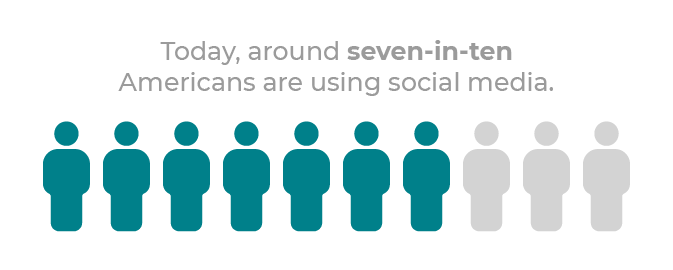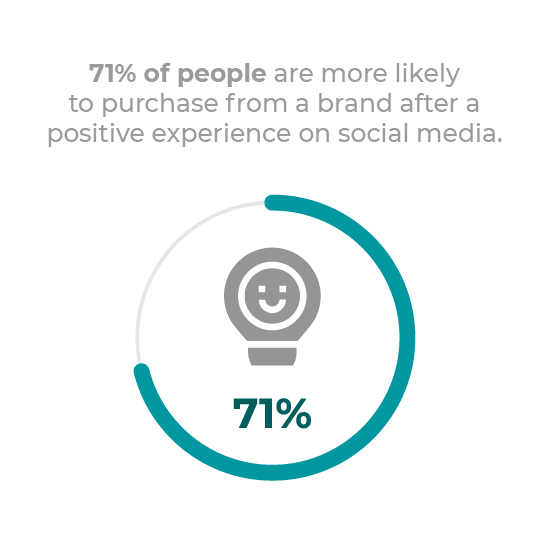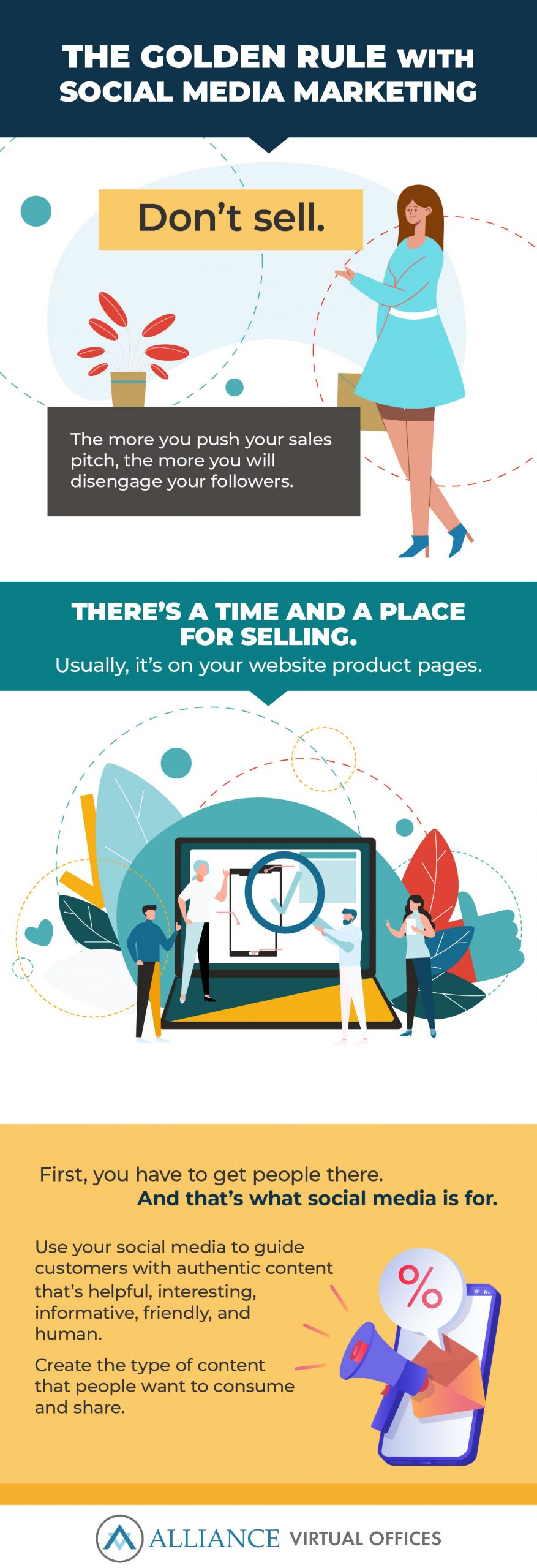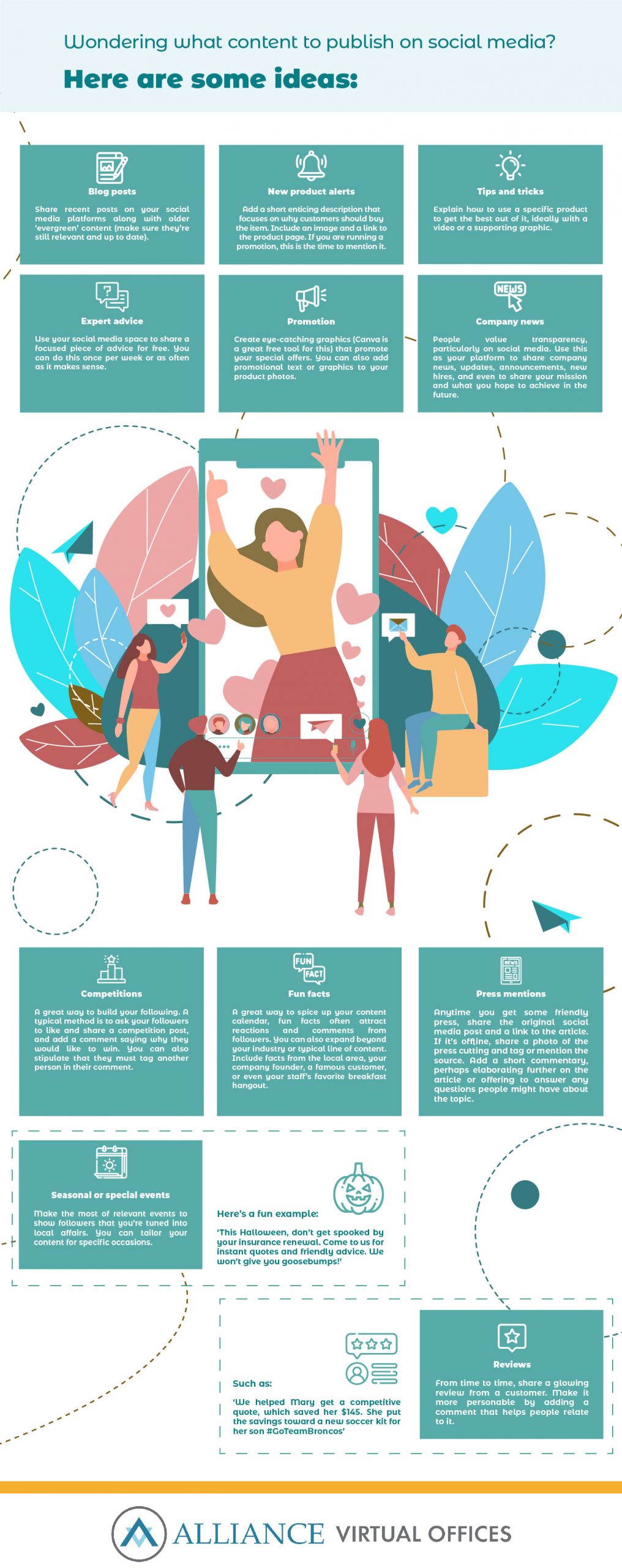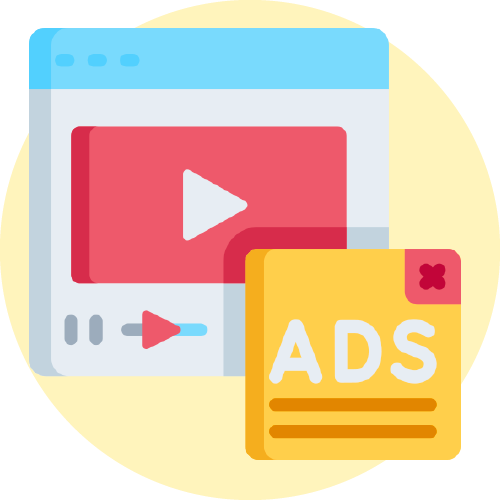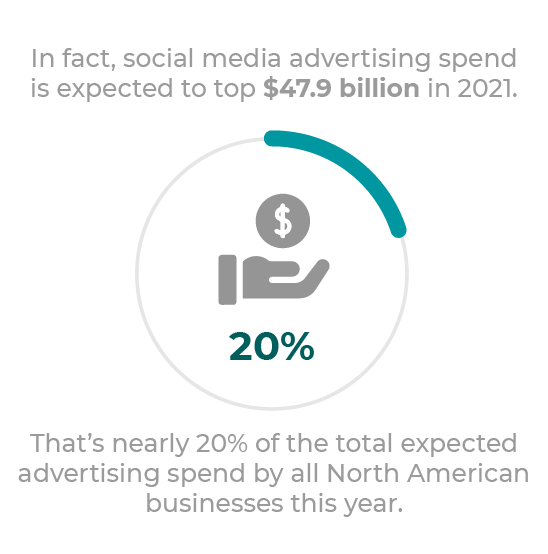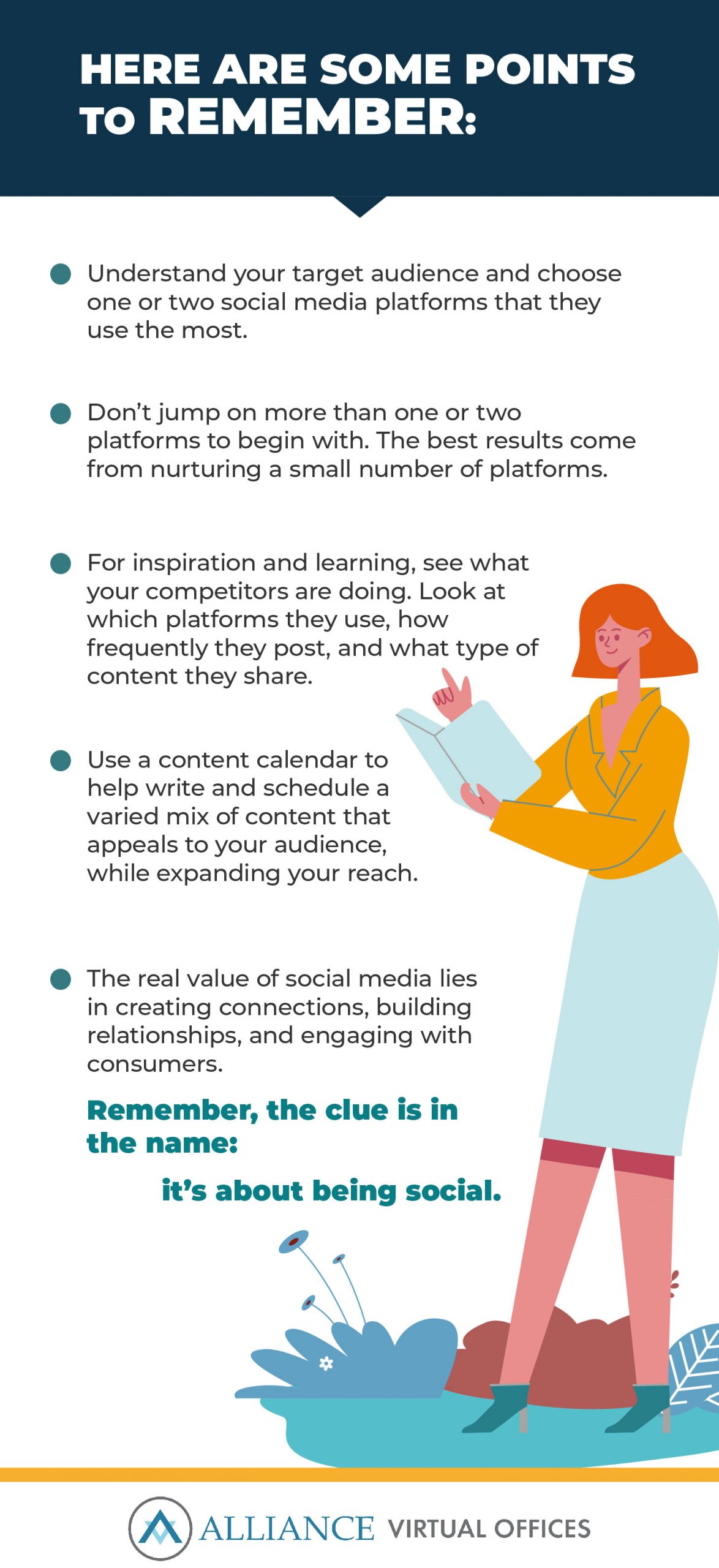- What is social media marketing?
- What Unique Tools and Strategies Exist for Social Media Marketing?
- How can small businesses maximize their use of social media marketing?
Q: How can small businesses utilize social media marketing?
A: Small businesses can use social media marketing to build brand awareness, engage with their customers, and generate new business.
Remember when marketing meant unsolicited mail, cold calling and billboard advertising?
Those marketing techniques still exist. But thanks to the Internet, fortunately, there are now many more targeted and effective ways to market your products and services.
In particular, the proliferation of social media has transformed the way small businesses operate and communicate with the outside world.
In this guide, ‘Social Media Marketing – Small Business Edition’, we explore how small businesses can leverage social media to reach more customers and grow their brands.
Ready to get to grips with social media marketing for small businesses?
Let’s get started.
What is Social Media Marketing?
Here’s a handy definition:
Social media marketing (SMM) is the use of social media platforms and networks to connect and engage with potential customers, to promote your business, and reach your objectives.
Whether through Facebook, LinkedIn, YouTube, or one of dozens of other social media platforms, more people than ever before are using this medium to connect with one another, learn and share information, and entertain themselves.
That’s why so many entrepreneurs want to know: How do I market my small business on social media?
Social media users are tuned-in and eyes-on.
They are eagerly using the same platform as your business on a regular basis, sometimes several times per day.
Social media marketing offers you the chance to tap into that audience. More importantly, you can narrow down that audience and target the right people, and connect with them in a more personal way.
Who can say that about a mass mailing campaign?
Of course the social media world is vast (and growing), and there are many different ways to leverage it for your small business.
Think about your own personal experiences.
You probably already engage with brands in a variety of ways:
| 1. You follow your favorite brands or local businesses on social media as a consumer, to keep up to date with products and services. |
| 2. You make customer service inquiries, such as inquiring about shop opening times or asking questions about a new product. |
| 3. You see posts in your social media news feed, from brands you don’t already follow or engage with. |
| 4. You learn about new brands or products through cross-promotion, when a person or brand you follow on social media promotes another. |
| 5. You seek out useful information — such as a ‘how to’ guide on YouTube. |
You can replicate one or all of these social media activities for your own small business.
Sure, you can do a lot of this yourself for ‘free’. But, beware the lure of free advertising.
A lot of people want to know how they can promote their business for free.
To a certain extent, posting on social media is a way to advertise your business organically, for free. That’s because most social media business pages are free to set up and manage.
But getting it right and building loyal customer engagement takes time, and time costs money.
Whether you intend to build and grow a social media strategy yourself, or hand it over to a skilled freelancer, it’s worth understanding the fundamentals of social media marketing first.
So let’s take a look at the main strategies available to you.
What Unique Tools and Strategies Exist for Social Media Marketing?
There are a few strategic considerations to make when taking your first steps into the world of social media marketing.
Most importantly, consider your target audience and which platforms they are most likely to use regularly. You should also consider how they use them.
How do you know which social media platform(s) best suit your business?
Here are a few questions to consider:
Your social media marketing budget will depend on your business, your industry, your resources, and much more. This example may give you a starting point, but it’s important to continually monitor performance and adjust your spend accordingly.
Social Media Demographics: Where Does Your Audience Hang Out?
What social media is best for small business? That’s the million-dollar question.
Facebook is the most-used and engaged-with platform — drawing more active users than YouTube or even WhatsApp. For that reason, most marketers recommend having a Facebook profile.
But after that, there’s a healthy variety of different platforms and networks to choose from.
So the real question is: What social media is best for your small business?
Let’s get into social media marketing small business statistics. Here’s a breakdown of the most popular social media platforms, and who uses them:

- What is it? A social network with a varied audience who use it for everything from messaging personal friends to keeping up to date with their favorite brands.
- 2.7 billion monthly active users.
- Largest age group: 25-34 (26.3%)
- Gender: 44% female, 56% male
- Best for: An established all-rounder for most types of content including videos, images, announcements, company details, and more.

- What is it? A visual platform for sharing photos and videos that’s almost entirely mobile. Snap photos on-the-go and get creative with filters and captions.
- 1 billion monthly active users
- Largest age group: 25-34 (33.1%)
- Gender: 57% female, 43% male
- Best for: Businesses with plenty of visual content to share.

- What is it? A platform for short posts featuring videos, images, links, polls, or just plain text. Known for its hashtags and retweets.
- 187 million daily active users
- Largest age group: 30-49 (44%)
- Gender: 32% female, 68% male
- Best for: Quick and short posts, customer service updates, and interacting with your followers through retweets and mentions.

- What is it? A platform aimed at professionals interested in building their corporate network, hiring new people, or looking for new job/business opportunities.
- 738 million total users
- Largest age group: 46-55
- Gender: 51% male, 49% female
- Best for: Professional networking and B2B news and information.

- What is it? A purely visual platform for posting, or ‘pinning’, images on digital pinboards.
- 400+ million monthly active users
- Largest age group: 30-49
- Gender: 78% female, 22% male
- Best for: Design or creative firms that want to show off their work and inspire others in a highly visual way.

TikTok
- What is it? A video-sharing site, famous for its short, fun, creative videos.
- 100 million monthly active users
- Largest age group: 18-24
- Gender: 59% female, 41% male
- Best for: Brands with a creative flair who want to reach younger viewers.

Snapchat
- What is it? A mobile-only, visual social media network. Users send videos and photos to each other or post content to their public Stories, which disappear after 24 hours.
- 265 million monthly active users
- Largest age group: 13-34 (75%)
- Gender: 58% female, 42% male
- Best for: Fun, short-lived, story-driven content.

YouTube
- What is it? A video-sharing platform where users can upload and share videos.
- 2 billion monthly active users
- Largest age group: 15-25
- Gender: 72% of all female internet users and 72% of all male internet users
- Best for: Creative, visual or educational video content.
Statistics: Sprout Social
As you can see, each platform has its own style and audience, which tend to favor a certain type of message or media.
It’s important to tailor your content to your channel. For instance, don’t try to use Twitter for lengthy announcements, and don’t hop onto Pinterest if you intend to share mostly text-based content.
Even if you have a message that you want to put out across all your social media channels, don’t simply copy and paste the same content.
Adapt it to suit each platform, and make the most of visual cues, shortened links, and relevant hashtags where possible.
Social Media Tools
There’s a lot to think about when it comes to social media marketing. This is where a handy management tool can help you make the most of your social media marketing small business strategy.
If you are just using one social media platform right now, you may find it easier to post directly onto your channel.
However, if you manage one or more social media accounts or platforms, there are benefits to using a third-party tool to manage your content.
These tools act as a layer, which consolidates multiple platforms and accounts, and can help you to:
- Write and schedule content, up to several weeks in advance
- Post content across multiple accounts and platforms
- Discover relevant and trending hashtags, so you can tap up-to-the-minute affairs
- Use analytics to understand what is and isn’t working, and refine your approach
- Stream all your engagements and messages from multiple platforms into one place
As you can imagine, as social media has grown, so too has the number of different tools to help manage your social media marketing strategy.
Most tools offer a free basic version, which is ideal if you’re just starting out. For more advanced user control and visibility, most premium versions offer a free trial.
Here’s a list of popular social media management tools to try out:
Read more about the pros and cons of these tools here.
If you’re wondering how to use social media marketing tools, dig deeper into the nuts and bolts with the help of a social media marketing small business course.
You’ll find plenty of free short courses online — there’s a handy list here — or invest in a course through the likes of Udemy.
Many social media professionals offer virtual training too, which can help you build the skills you need to build and grow an effective social media marketing strategy.
How Can Small Businesses Maximize their Use of Social Media?
Now you know a little more about social media marketing and how it works, let’s take a look at how to maximize this marketing strategy to grow your small business.
Remember, the aim with social media is to create connections, drive engagement, and build relationships.
Why is social media good for small businesses? This statistic speaks for itself:
Through the power of social media, your brand has the opportunity to develop its own personality and become a trusted member of your chosen community.
To do that, you need good quality content.
Specifically, you need targeted content that aligns with your goals, your audience, and your chosen social media channel.
A content calendar is a great way to keep your content on-track.
Wondering what content to publish on social media? Here are some ideas:
Pro Tip: Remember to share content on your social media platform(s) multiple times, spread over a number of weeks or months. A lot of followers will miss your first post, so re-publish as often as you can.
As you can see, the list of topics you can weave into your social media marketing content is long and varied.
Need more inspiration? Take your learning offline and invest in a social media marketing small business book. There’s a list of recommended reads here to help you get started.
Experiment with content and try different approaches.
Always remember your audience and make your content relevant.
Don’t be afraid to speak conversationally on social media. Brands frequently use ‘I’ or ‘we’ to add personality, which helps users feel they have a personal connection with your brand. This leads to brand loyalty and organic exposure.
Monitor what is and isn’t working, whether through a third party management tool or by using data directly from your social media platform, and refine your approach as you go.
You have the opportunity to learn directly what your customers respond to. Use that to your advantage.
Advertising
So far we’ve mostly talked about organic social media content. But you might also want to consider paid social media.
Paid social media typically involves advertisements or sponsored marketing messages, which target a highly specific sub-audience.
Here’s the difference:
- Organic social media uses social media platforms to create a free page or profile for your business, from which you build a social community and engage with it to meet your objectives.
- Paid social media involves using social media platforms to advertise your business and products for a fee, often on a cost-per-click basis.
Advertising on social media helps businesses target their audiences quickly.
Organic social media marketing, just like search engine optimization, is a long, slow-burn process. Done right, it’s worth it in the long run — but it can take many months to craft the right messages, build your audience, and develop the right balance of content.
That’s why many brands go straight for paid advertising.
It’s fast and targeted — therefore it has the opportunity to be incredibly cost-efficient.
But even though it can be a successful marketing strategy, you shouldn’t neglect your organic efforts.
In addition to building engagement and interacting with customers, social media acts as a window onto your company.
A social media profile that hasn’t been updated for weeks looks sloppy. It can even look like your company has gone out of business.
On the flip side, a company Facebook page or Twitter profile that’s alive and buzzing with fresh, relevant, interesting content instantly draws people in.
So if you do decide to invest in social media advertising, do it alongside your organic efforts.
Read more about social media advertising here:
- Paid Social Media: Worth The Investment? (Hubspot)
- Resources for Social Media Advertising & Paid Social (Sprout Social)
Other Ways to Grow Your Business Profile
Building a social media profile for your small business is an important step in your overall marketing and growth strategy.
One thing to consider is, what contact details will you put on your social media profile?
Should you use your home address and cell number?
Or do you prefer to keep your personal and business lives separate?
For most entrepreneurs, it’s the latter.
Most customers prefer to see a separation in your personal and business details, too. It builds credibility and helps your brand look more established and trustworthy.
That’s where a Virtual Office can help.
A Virtual Office provides a recognized commercial address and a 411-listed business number with a toll-free or local area code.
It’s a cost-effective way to separate your home life from your business, as it means you can keep your home address and personal cell phone number private.
You can use your address and business number on your social media profiles, your website, your email footer, in official documentation such as business licenses, to open a bank account, and more.
In the meantime, you can continue to work from home or wherever you are most productive, while to the outside world, your business is based at a recognized office in the location of your choice.
With prices starting from just $49 per month for a Virtual Office address, and a simple flat fee of $30 per month for a business number, it’s a cost-effective way to establish credibility and grow your business.
You can also visit your Virtual Office center in-person to rent meeting rooms or private office space by the hour (starting from just $10), which provides a quiet, professional environment to meet with clients or coworkers.
Find out more at alliancevirtualoffices.com.
Conclusion
Social media marketing is extremely useful for businesses of all sizes.
Today, consumers expect your brand to have a social media presence. That’s because they want transparency, and they want a conversation — they don’t want to be sold to.
They want to feel a human connection.
That’s the power of social media.
No matter the size of your business, social media can help you connect with your audience, reach new potential customers, and increase awareness of your brand.
If the possibilities seem overwhelming, take things slowly. Don’t jump in at the deep end — just start by dipping your toe.
Experiment with content and visuals. Monitor the outcome and do more of what works, and less of what doesn’t. Refine, test, and repeat.
Further Reading
- How to Use Social Media Marketing for Small Business: 12 Simple Tips
- Why Small Businesses and Startups Should Invest in Social Media
- Social Media for Small Business: A Guide for 2021 and Beyond
We hope this guide has helped your business get acquainted with social media marketing. Why not connect with Alliance on Facebook or Twitter and share your thoughts with us?



